#skink
Text
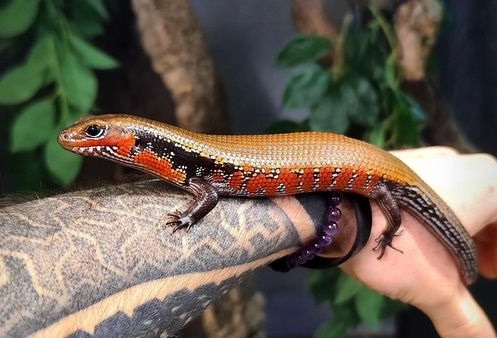
Fire Skink (Mochlus fernandi), family Scincidae, found in West Africa
* Also known by the scientific name Riopa fernandi.
Photograph by Terrario center
298 notes
·
View notes
Text

I need to share this. I made emets food and turned around to get my phone. He showed me that this is his food with a tiny feet protecting it. He was looking so proud, as if he had made it and not me
4K notes
·
View notes
Text

Hands too smol to hold
5K notes
·
View notes
Text



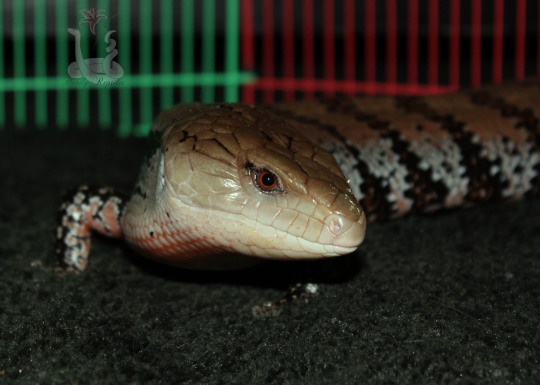
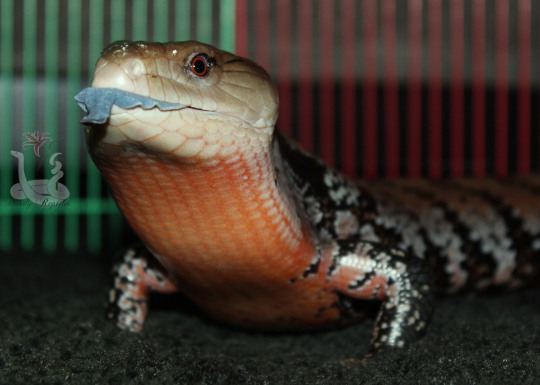
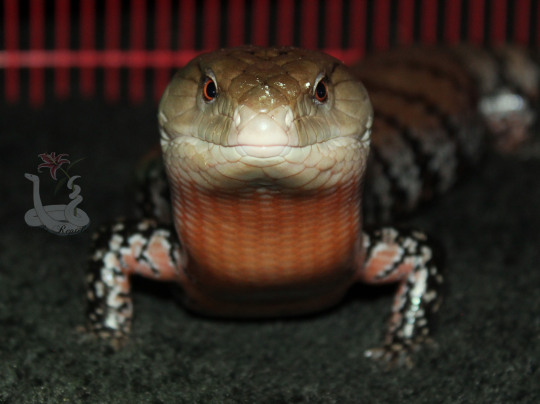
Happy gotcha day to Undyne! I've officially had this wonderful lady for 3 years 🥰🥰
Stay tuned for the gotcha day cake video!
745 notes
·
View notes
Text

New years Bunny Skink doodle 🍷🐰
#art#digital art#monster girl#oc art#goth#blue tongue skink#skink#lizard girl#sketch#scarllust#scarlet liatrys#doodle
4K notes
·
View notes
Text
I've been doing a lot of volunteer fieldwork with these guys recently so I thought I might as well do an infodump about them here.
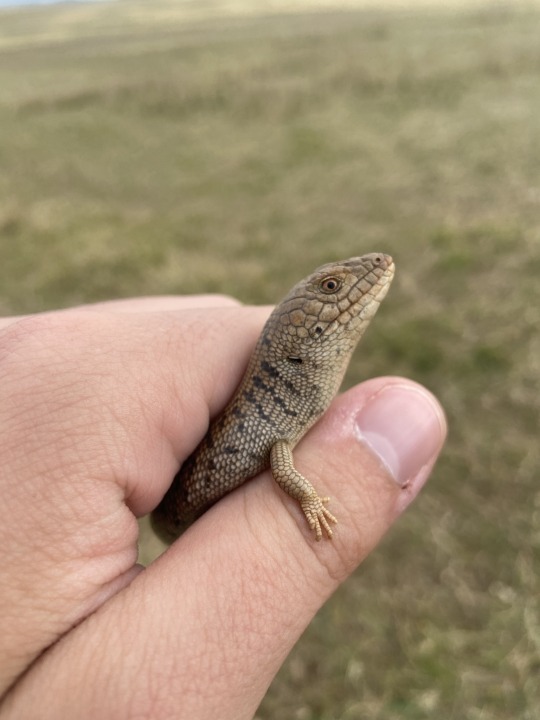
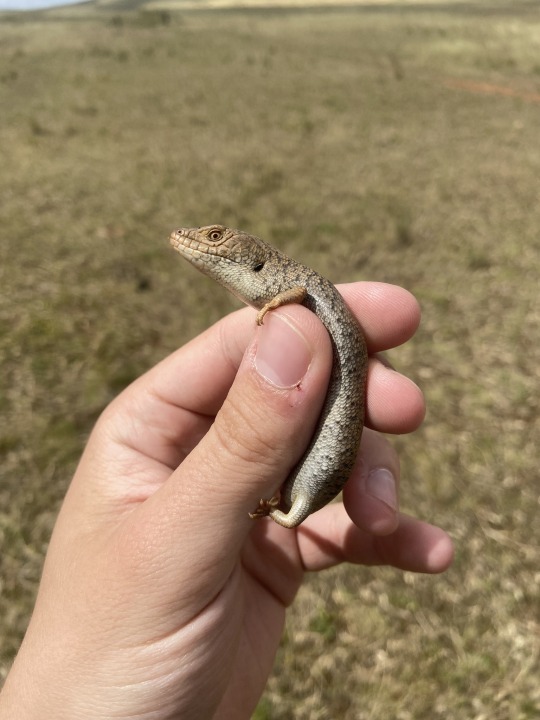
The pygmy bluetongue skink (Tiliqua adelaidensis) is one of the most unique and unusual members of the Tiliqua genus, which includes the true bluetongues as well as the sleepy lizard/shingleback. However, the pygmy bluetongue actually lacks the blue tongue the group is named after, having a pink tongue instead! As its scientific name suggests, it is quite a range restricted species, being found only in open grasslands north of Adelaide, South Australia, as far north as Peterborough. Historically they ranged more extensively across the Adelaide Plains, as far south as Marion, but due to the destruction of suitable habitat they now occur no further south than Kapunda.
While most bluetongues are notable for their large size amongst skinks, with several species regularly exceeding 30 cm in length, the pygmy bluey lives up to its name by measuring a measly average of 9 cm long from snout to vent. This is actually still a fair size compared to the average skink, but it's miniscule by bluetongue standards. Even more notable than their size however are their habits, for they are the only species of lizard that is specialised to live exclusively in old spider burrows! The burrows of both trapdoor and wolf spiders are used, but trapdoor burrows are preferred in most instances.

Pygmy bluetongues spend the majority of their lives within these spider burrows, leaving only to defecate, seek out mates and disperse. The average length of time a lizard spends in a particular burrow is highly dependant on the individual - some are sedentary and spend many years within a single burrow, while others will move around fairly frequently. As well as places to shelter and raise their young (they have parental care, it's very cute), pygmy bluetongues also use the burrows as ambush sites, waiting at the top for suitable prey, usually a mid-sized arthropod, to stray close enough for them to quickly dart out and drag them into the depths.
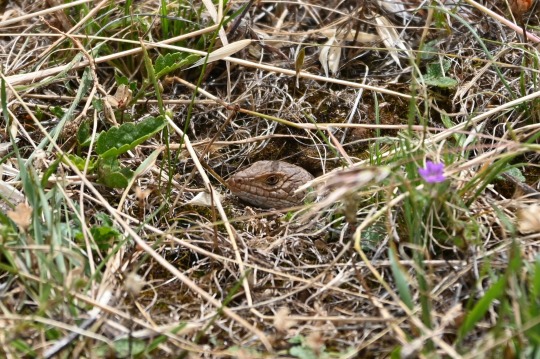
but here's the ambusher
The chief natural predators of pygmy bluetongues are raptors and brown snakes, and sheltering in the burrow is the main defence against both of these threats. Their burrows are often wide enough for a brown snake to enter, but not wide enough for them to open their mouths in - this means all the brown snake usually gets by pursuing a sheltering pygmy is an angry lizard attacking its face, forcing it to retreat.
The lazy lifestyle of the burrow-stealing pygmy bluetongues is certainly unique, and also explains why they have been such an elusive species since they were first discovered by Western scientists in the 1860s. Rarely seen or collected, their habit of inhabiting spider burrows remained undiscovered for the longest time, and by the 1960s they had become so hard to find that they were believed to be extinct. That was until, in 1992, a pygmy bluetongue was found inside the stomach of a roadkill brown snake by amateur herpetologist Graham Armstrong, confirming their status as a Lazarus of the lizard world.
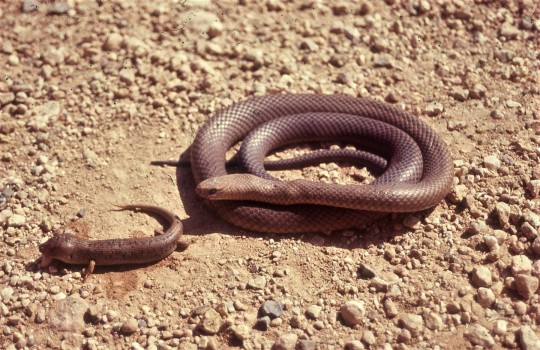
The historic rediscovery of the pygmy bluetongue
(Image credit: Graham Armstrong)
Our previous assumptions of extinction were fortunately premature, but the pygmy bluetongue skink is in serious trouble nonetheless. While they are able to live in a variety of different grassland types, both native and exotic, the extensive modification of their entire distribution through cereal cropping and urbanisation has led to their populations becoming very small and fragmented, giving them a ranking of Endangered on the IUCN Red List. Almost all of these populations are on private land (often grazed by sheep), which makes protecting and/or studying them particularly difficult and complex.
However, when it comes to future threats to the species, climate change is easily the most worrying. As Australia becomes ever hotter and drier, their small remaining distribution is likely to become largely unsuitable, threatening the existence of the entire species. To combat this, researchers are currently investigating the viability of translocating populations further south to areas with cooler climates, providing a safeguard if they do indeed disappear from their remaining natural distribution.
But how do you study a lizard that lives exclusively in small spider holes? Well, if you want to catch them, there's only one tool for the job - the humble fishing rod. Not any special fishing rod either, just a regular rod with a poor mealworm shoddily tied to the end. Using this, you can engage in a tug of war with the lizards until, if they aren't being too difficult, you're able to pull them completely out of their burrow and catch them to perform the necessary measurements and processing. David Attenborough kindly demonstrates this technique in Life in Cold Blood, although in his case the lizard was steadfast in remaining in the burrow!

the sacred tool of the mighty lizard fishermen
returned to their abode
Two additional Fun Pygmy Facts:
Fun Pygmy Fact #1 - The closest living relative of the pygmy bluetongue is the sleepy lizard!
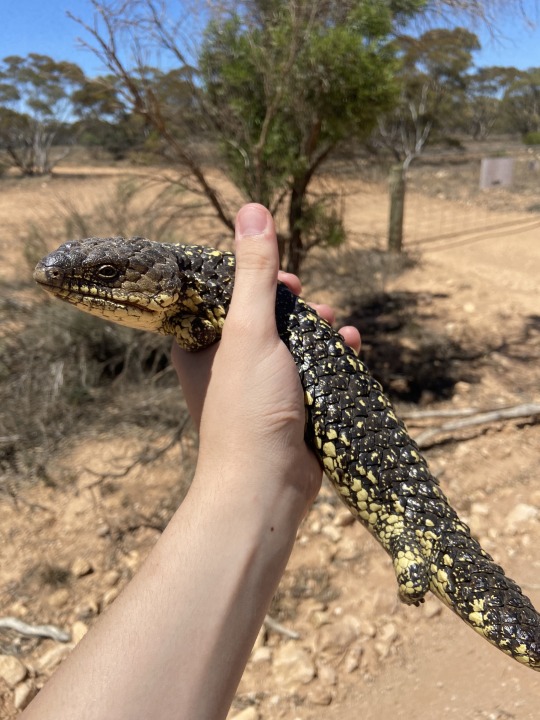
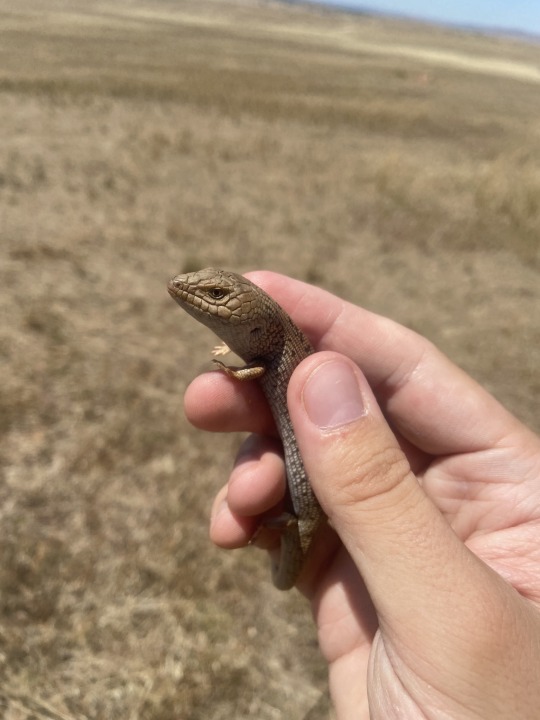
cousins!
Fun Pygmy Fact #2 - Wooden artificial burrows purpose-made for pygmy blueys have proven effective, and the lizards inhabiting them even tend to be in better body condition than those in natural burrows!

#australian wildife#wildlife#reptile#lizard#skink#tiliqua#bluetongue#animal facts#herpetology#natural history#fieldwork#infodumps#my stuff
856 notes
·
View notes
Text
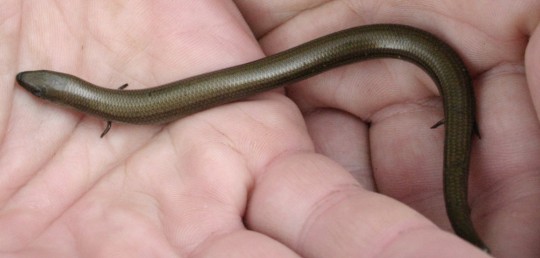
Italian Three-Toed Skink (Chalcides chalcides)
Family: Skink Family (Scincidae)
IUCN Conservation Status: Least Concern
Like several other species of lizard, the Italian Three-Toed Skink has adapted to move through areas covered with dense vegetation by developing an elongated, flexible, snake-like body with highly regressed limbs, although unlike many other "snake-like lizards" members of this species still possess four tiny limbs, each ending in a stumpy three-toed foot. Said limbs are far too small to support the skink's weight and serve no role in movement (which is achieved through an elegant snake-like slithering motion,) which has led many to question what purpose, if any, they serve; it is generally assumed that the limbs are vestigial and that, given sufficient time, the descendants of modern Italian Three-Toed Skinks will lose them entirely, although some herpetologists and evolutionary biologists have suggested that the continued existence of this species' limbs suggests that they must serve some function, such as being moved as part of a courtship display or allowing mating individuals to hold onto one another (although as these behaviours have never been observed these suggestions are entirely speculative.) Found in damp, well-vegetated areas across most of mainland Italy as well as Tunisia, Algeria, Libya and the nearby island of Sardinia, members of this species are diurnal, feed mainly on insects and breed during the spring; like most skinks, females of this species give birth to live young, with newborns, which resemble miniature adults, being independent immediately after birth.
--------------------------------------------------------------------------
Image Source: https://www.inaturalist.org/taxa/53646-Chalcides-chalcides
#Italian Three-Toed Skink#skink#skinks#animal#animals#zoology#biology#herpetology#herpetofauna#wildlife#european wildlife#african wildlife#reptile#reptiles#lizard#lizards#squamata#squamates
878 notes
·
View notes
Text
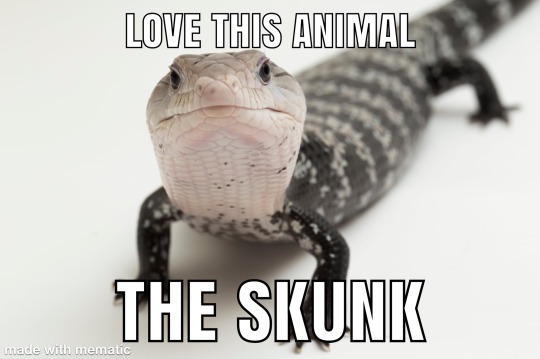
1K notes
·
View notes
Text

Lizards from my m e m o r y
#lizard#comic#illustration#art#comics#sketchbook#animals#lizards#marie enger#nature#weird#dumb#creatures#maybe I’ll make a shirt#alligator#gharial#skink
522 notes
·
View notes
Text
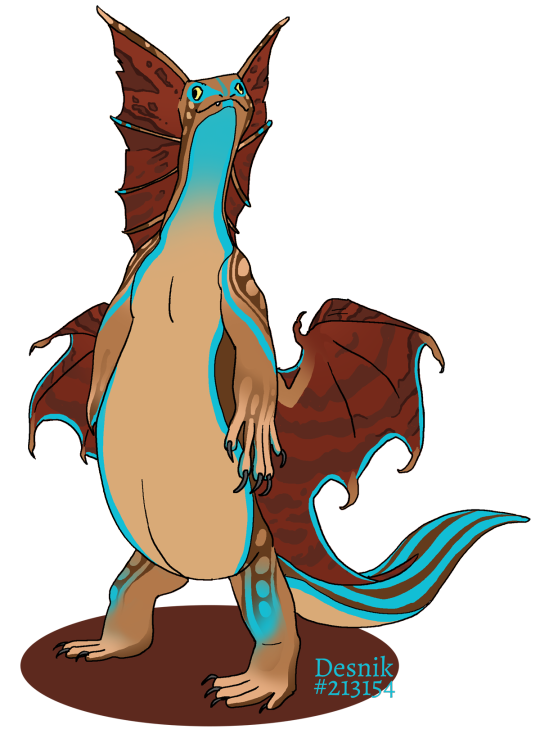
Draw bogsneaks like this
[img id] Digital artwork of a Bogsneak dragon, which looks like a monitor lizard standing upright. It is drawn with thin black lineart. A bogsneak has a long neck, a long tail, relatively stubby lizard limbs, and a short wingspan. Twin frills line its neck. This dragon is mostly tan along the body, with reddish brown wings and mineralized dark brown splotches on all the wing and fin membranes. It sports exotic turquoise marks, including a 'mask' around the eyes and contour lines down its belly and across its limbs. Its tail is vibrantly stripy with deep brown and turquoise stripes.
If someone hates this dragon's anatomy or tells me I've "ruined" my own artwork, I will eat them [/id]
#flight rising#bogsneak#monitor lizard#dragon anatomy enthusiasts dni#my art#digital art#dragon#pet sim#skink#daub#contour
176 notes
·
View notes
Text

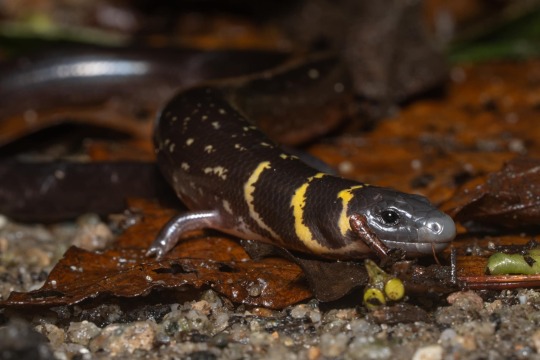

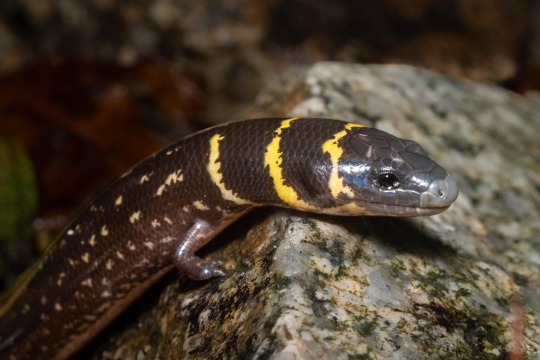
Three-banded Larut Skink (Larutia trifasciata), family Scincidae, Malaysia
Photograph by Tristan Csb
139 notes
·
View notes
Text
Emet had his very first raspberry today as a little treat
2K notes
·
View notes
Text
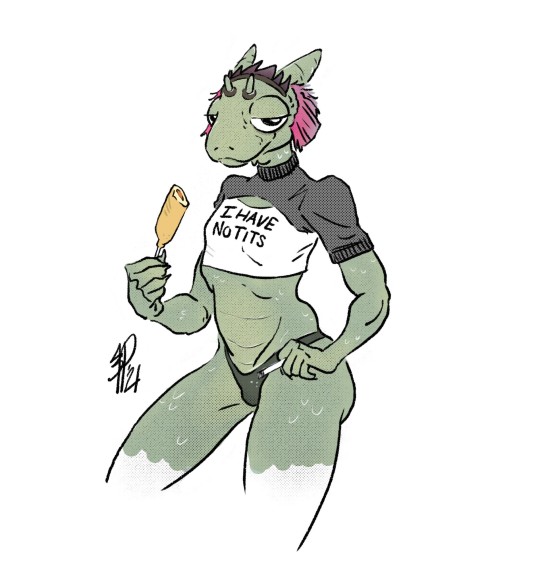
Can I offer you nonbinary lizard tits in these trying times?
#crittertongue#dinosaur sheriff#possumcollege#art by op#comic art#skink#lizardfolk#corndog#queer comics#mature themes#fantasy#urban fantasy#monsters#creatures#cryptids
563 notes
·
View notes
Text


New baby wörm
442 notes
·
View notes
Text

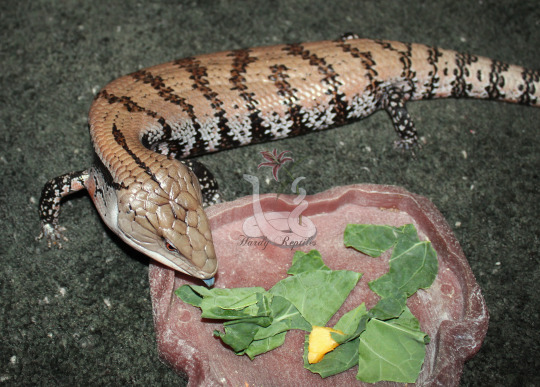
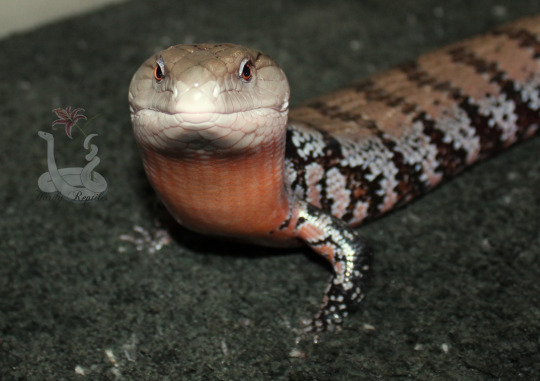


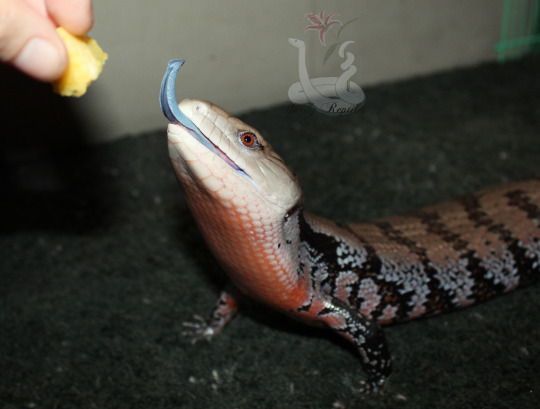


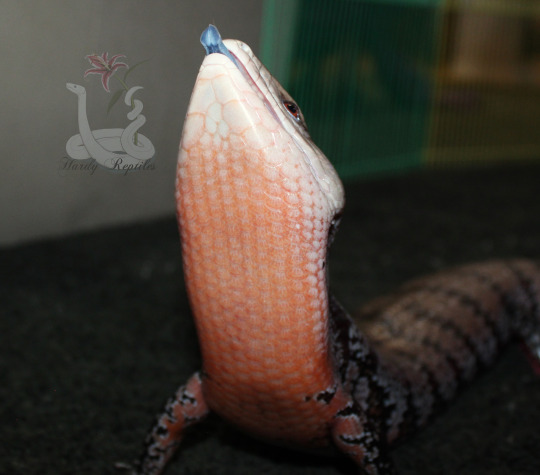


Mmmmmm... leaf
Is that pumpkin??
GIB
GIB ME PUMPKIN
354 notes
·
View notes